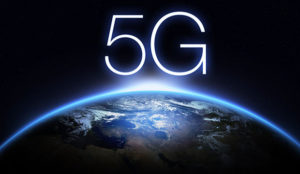
This story was originally published on July 29, 2011, and is brought to you today as part of our Best of ECT News series.
It appears that scientists at the Hong Kong University of Science and Technology proved recently that you can’t travel faster than the speed of light in a vacuum.
That discovery, howled many popular publications, means time travel is impossible.
“Impossible,” however, is a very powerful word. Has this research truly proven that traveling in time is absolutely and without a doubt out of reach?
In fact, the discovery does not rule out time travel per se, Shengwang Du, who led the HKUST research team, told TechNewsWorld.
Here’s why: The spacetime continuum is curved, and the HKUST’s experiment was performed in a flat time and space.
“No experiment has verified this [result] in a curve spacetime [continuum],” Du said.
Earlier this year, two scientists at the University of Queensland in Australia, Jay Olson and Timothy Ralph, made a discovery in quantum physics that may allow what they termed “teleportation in time.”
This has to do with entanglement, a phenomenon in quantum physics.
Du’s team proved that a photon traveling in a vacuum through flatspace cannot travel faster than the speed of light, as Albert Einstein posited in his theory of relativity.
However, that has nothing to do with time travel.
“The [HKUST] paper itself does not actually comment on time travel at all,” Queensland University’s Ralph told TechNewsWorld. “Relativity explicitly allows for time travel to the future.”
The HKUST Project
Du’s team broke new ground in proving that a single photon cannot exceed the speed of light when traveling in a vacuum in flatspace.
Back in 2009, the team had verified that groups of photons don’t travel faster than light, either.
Du’s team is the first to prove that optical precursors exist at the level of single photons, and that they are the fastest part of a single-photon wave packet even in a so-called “superluminal” medium.
Precursors are characteristic wave patterns caused by the dispersion of an impulse’s frequency components as it propagates through a medium. Classically, they precede the main signal. Precursor phenomena exist for all types of waves — electromagnetic radiation, visible light, fluid surface waves and seismic waves.
If you’ve ever seen a video of a bullet fired from a gun, you’ll get the idea. The bullet compresses the air ahead of it, and you can think of that as the precursor to the bullet because it’s that compressed air that first damages the target.
What is a single-photon wave packet? Well, a photon’s existence is embodied in a wave function, which is usually a wave packet. That wave packet can be split into two if you direct a really dim beam of light through a pair of slits in a screen.
The word “superluminal” means faster than light. According to a paper on negative propagating light by Daniel Bauer at the University of Arizona, light has been recorded traveling at superluminal velocities.
That concept may bring on a splitting headache, but it has to do with the two velocities associated with the speed of light — group velocity and phase velocity. However, this is not pertinent to time travel, so let’s move on.
All About Quantum
Queensland University’s Olson and Ralph found a new type of quantum entanglement that extends not only through space but also through time.
Quantum entanglement is when two or more objects interact physically and then become separated in such a way that, if you want to describe one, you also have to describe the other.
Olson and Ralph showed that entanglement also works across time, and that it’s so much a part of the universe that a measurement made in the past will automatically affect one in the future.
The experiment shows that it could be possible to travel into the future from the present, without being present in the intermediate time. In other words you can go from, say, 1 p.m. to 5 p.m. instantaneously.
However, that’s one way of looking at this experiment’s results.
Another way of describing what happens is that the particle becomes stored in a disembodied way between the vacuum entanglement and the classic message, then is reconstructed at the future time. In other words, now you see it, now you don’t, then you see it again.
“If you call it time travel, it is time travel to the future, which is allowed by relativity,” Ralph said.
“The technique mentioned in our paper is a form of quantum teleportation. It only works for quantum particles,” Ralph added. “It only works forward in time.”
Time on the Mind
The concept of moving through time has been the stuff of fairy tales, myths, legends and science fiction.
Remember the H.G. Wells novel The Time Machine? Or how about the TV series “The Time Tunnel,” or Ray Bradbury’s “A Sound of Thunder?”
Some theories, the best known being Einstein’s theories of special and general relativity, suggest that specific types of motion in space or suitable geometries of spacetime might allow time travel.
Scientists generally hedge their bets and talk about things like the possibility of closed time-like curves. There are solutions to the equations of general relativity that describe spacetimes containing closed time-like curves such as Godel spacetime.
The requirements of Godel spacetime are such that the concept is currently used only as a theoretical concept.
What’s the Time?
One of the major problems with the concept of time travel is that time itself is not clearly defined.
“There are several ways of measuring time in physics,” Queensland University’s Ralph pointed out. In the paper Ralph and Olson used the time as it’s measured by a clock.
The classical notion of time, which was used by Galileo and Newton, holds that time is the same for everyone everywhere. As such, it’s used as a parameter for timelines.
However, the modern concept of time is based on Einstein’s theory of relativity. This postulates that time runs at different rates depending on relative motion, and space and time are merged into spacetime, thus making time part of a coordinate.
So, is it possible to travel through time?
Perhaps, by traveling at very high speeds, Queensland University’s Ralph said. This would require “very large” amounts of energy.





















































